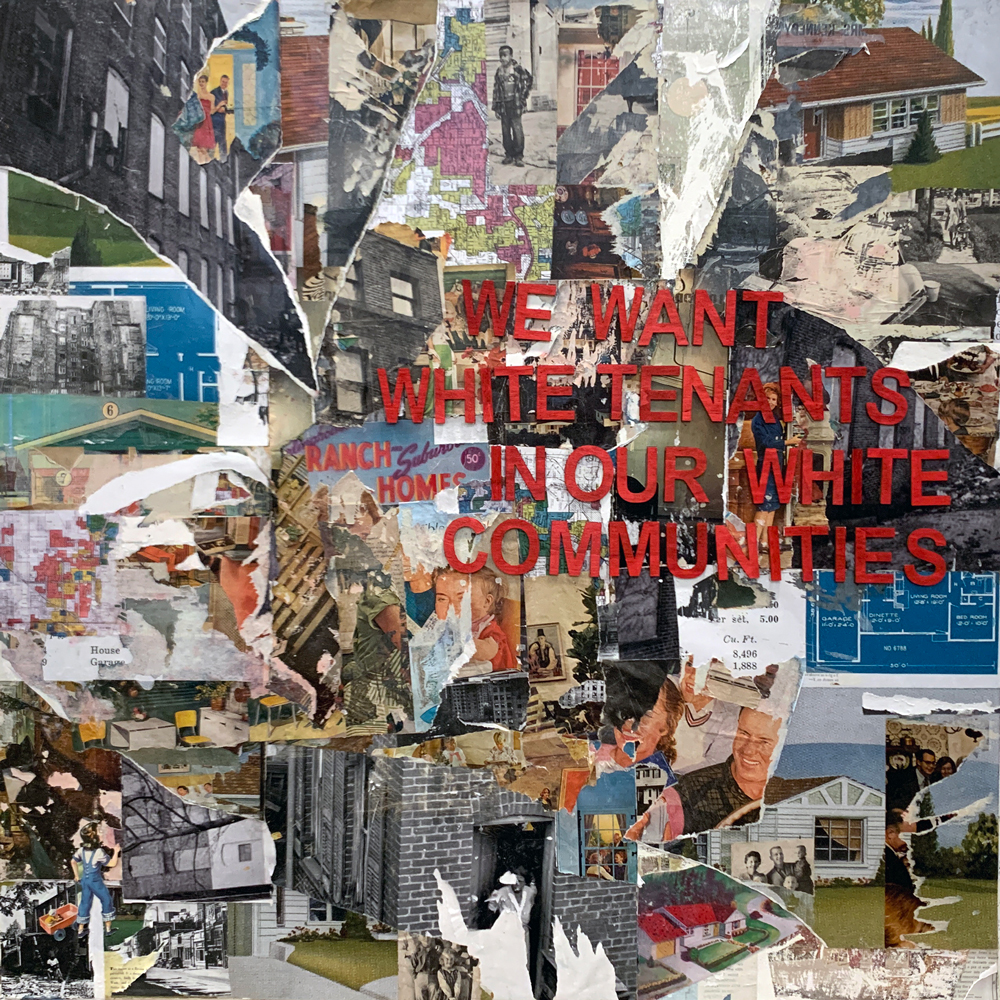


Phyllis Famiglietti pulls on her history, both personal and professional, in order to create this intricate and highly complex collage, Redlining. As a film and video editor, she developed a style of layering work that continued to inform her collage practice, as she began to “go beyond the constraints of video and photography and…appreciate the freedom of using [her] hands to…physically manipulate image and form.”
Redlining came out of Famiglietti’s lifelong journey to understand more about the systemically racist practice of “redlining.” Her awareness of this practice began as a white child witnessing the differences between her attractive, well-maintained apartment building with numerous playgrounds and inhabited by primarily white owners, contrasted with the run-down apartment complex with one playground in disrepair and inhabited by primarily Black renters, just across the street.
“The differences were obvious. Especially to a kid.”
Famiglietti’s early sense of injustice grew as she learned the history of redlining which began in the 1930’s with the Home Owner’s Loan Corporation and their practice of drawing red lines around neighborhoods where people of color resided. These areas, solely due to the racial identities of their residents, were then downgraded as “high risk” for investors and mortgage lenders, which allowed them to deny homeownership applications or offer only exorbitant loans to Black potential buyers. The devaluing of properties in these areas also encouraged the “white flight” trend in the 1950s, in which white homeowners moved away from these neighborhoods to wealthier (and often more tightly controlled) suburbs. The consequences of the systemically racist practice of redlining have contributed to the ongoing generational wealth gap empirically observed between white and Black Americans.
Famiglietti writes: “In this collage, distressed images of suburban homes from vintage publications, mixed with smiling white faces from advertisements of the same era, represent a troublesome reality. The white occupants go about their lives, laughing and entertaining…oblivious to their own privilege and to the injustices they/we are perpetrating…“We Want White Tenants In Our White Community” was an actual sign that was placed outside a black housing complex in Detroit, Michigan in 1942…My purpose [in this work] is to reflect my own disquietude and to try and hold a mirror to our own white hypocrisies.”